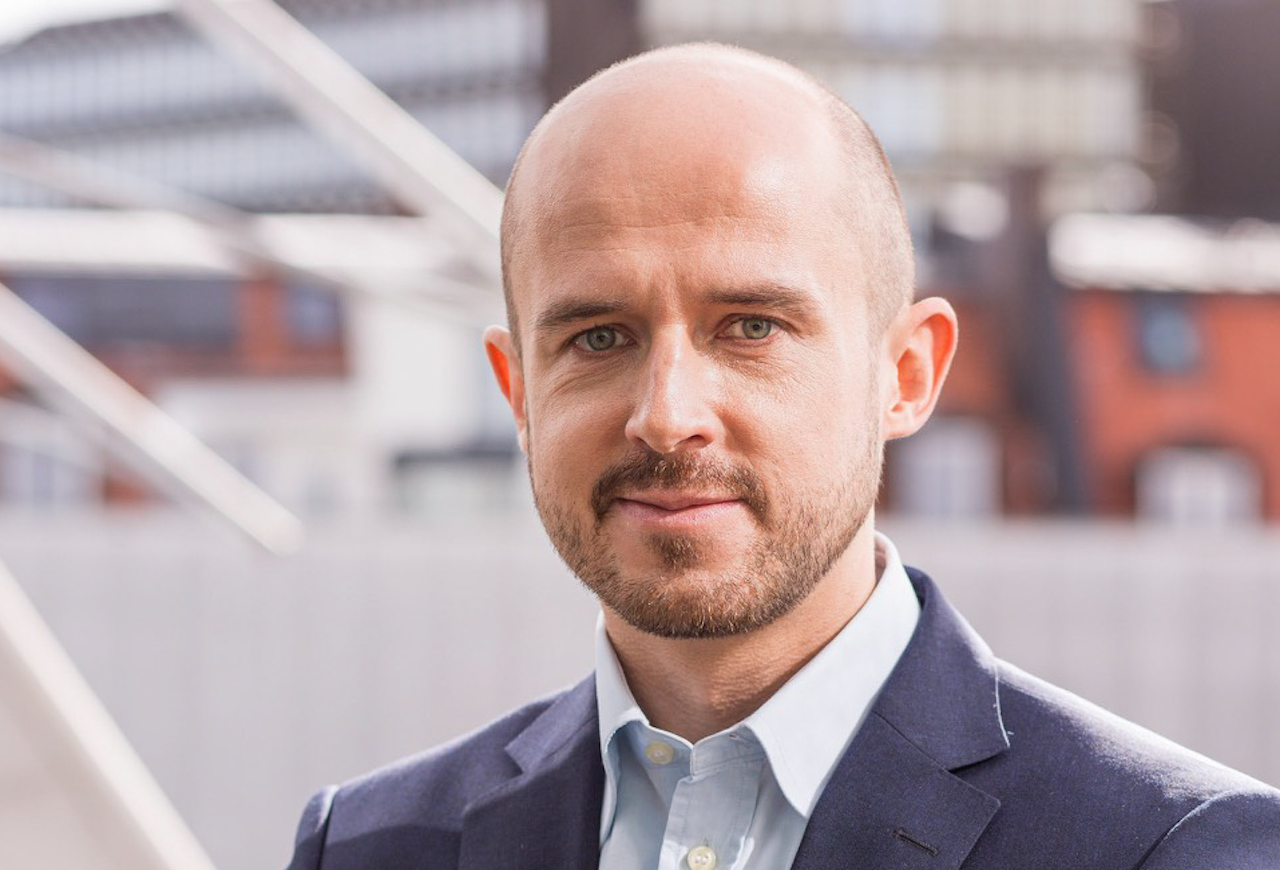Bernhard Kowatsch, head of the UN World Food Programme Innovation Accelerator explains how they source, support and scale high-impact innovations to achieve SDG 2 – zero hunger.

In brief
- United Nations (UN) World Food Programme (WFP) Innovation Accelerator
- Launched in 2015 to support innovations focused on ending hunger
- Has supported more than 100 innovations since 2015
- Runs accelerator programmes for external partners
- More than 45 nationalities represented, and 23 languages spoken in the team
- Tech for good: A meal-sharing app started a journey to find other innovators
- Investible innovations, not only donations, will be part of ending hunger
The launch of a meal-sharing app was the starting point of a journey which is now focused on ending world hunger through innovations in technology, financing and funding.
At the helm of this ambition is Bernhard Kowatsch, who co-founded the ShareTheMeal app with his then colleague Sebastian Stricker in the mid 2010’s.
At the time, Kowatsch and Stricker were at the United Nations (UN) World Food Programme (WFP) and pondering the questions: “What will it take to end world hunger?” and “What can we do to help?”.
Their solution was a simple micro-donation app where you can donate as little as €0.70 to feed hungry people. The app was recognised as one of the Best Apps of 2020 in Google’s ‘App for Good’ and Apple’s ‘Making a Difference’ categories.
Kowatsch, who started his career in the private sector as a management consultant, left WFP with Stricker to launch ShareTheMeal, before eventually donating the app back to the WFP and starting the WFP Innovation Accelerator.
“This process made me think that there must be others doing amazing things but that there is not the infrastructure that exists in the private sector for social innovators. Then WFP got on board as did the German government which is how it all started,” he explains, adding that since then many other European governments, as well as that of the United States, are now on board.
Kowatsch created the WFP Innovation Accelerator in 2015 with 5 core members. He remains the head of a now an 80-strong team, including a specialised innovative finance team, introduced in January 2022.
SDG 2 – Zero Hunger
Kowatsch is convinced that achieving the UN Sustainable Development Goal (SDG) 2 – Zero Hunger – by 2030 is actually doable, but it will take more than charity and traditional funding mechanisms.
He says that realistically, conflicts will have to end, and ongoing action will need to be taken against climate change and food poverty.
According to Kowatsch, the key solution is innovation. “Innovation and startups are a vital part to boost income and a healthy diet for the poor,” he adds.
He concedes that it is indeed a challenging goal but also exciting when you see what is possible. “Last year, we positively impacted 37 million people and I believe we can reach 100 million people by 2025 – having doubled the people impacted every year since the start. We have also raised $196m through co-funding for innovations,” he says.
Investable innovations
“There are investable innovations, so why not use equity investments and debt financing to scale the desirable impact”. This is the idea that led to the genesis of the innovative finance team.
Since mid-2021, the team has explored what else can be done regarding new ways of financing and funding for innovative impact businesses.
The team emulates private equity and venture capital in finding innovative companies in early development, and scaling-up their financing. Kowatsch agrees that it is a challenge to find the best innovators on the planet that are also able to help in emergency responses or to sustainably end hunger. Other challenges are scaling and financing these innovations and startups, he says.
“We are mainly funded through donations, but we want to keep on scaling up and working with the private sector and investors to unlock the next level of funding to accelerate the growth of innovative solutions,” he adds.
WFP Bridge
One new way of funding innovations is through the WFP Bridge, which the team is working together on with the UN Capital Development Fund (UNCDF).
The plan is to officially launch in the first half of 2023. “WFP Bridge will enable us to move beyond grants and provide loans and guarantees that will unlock and catalyse additional funding for the start-ups and innovations to scale. The facility will be grant-funded to allow us to provide concessional funding that many of the innovations require to ‘bridge’ the gap before accessing more commercial financing, and to de-risk investments with the intention to attract more investors into the space. We are looking for partners interested in supporting innovations at this critical part of their scaling journey – both donors providing funding for WFP Bridge and co-investors in our portfolio companies,” he explains.
Investors have been particularly interested in the WFP Bridge as it can generate pipeline for their strategies that increasingly focus on impact. Kowatsch and his team are also part of the World Economic Forum’s Humanitarian and Resilience Investing (HRI) Initiative that convenes humanitarian organisations and more traditional investors.
“There is real appetite from private foundations, investment managers and banks to invest in innovative companies tackling some of the largest challenges of today, and mechanisms like WFP Bridge can be a real game-changer in unlocking private capital flows at scale.”
SheCan
Another funding opportunity is through a blended financing initiative called SheCan, which enables donors and private lenders to support financial inclusion and gender-transformative programmes.
This concept of affordable micro-lending and technical assistance provision is for the most vulnerable populations or recipients of WPF assistance, such as smallholder farmers and rural micro-entrepreneurs, which are not typically targeted by micro-lending institutions because they are perceived as high-risk borrowers, and the high cost of servicing loans in rural areas.
“The concept of SheCan is about women’s economic empowerment through financial inclusion and capacity building, with active programmes in Peru, Rwanda, Zambia and Malawi,” he says.
Kowatsch and his team are keen to work with investors who are looking to make a meaningful impact, as well as unlocking investment opportunities that ultimately will help end world hunger. “There are sceptics as always, but as investors are increasingly focused on impact and sustainability, there is definitely a case to be made,” he says adding that the team is open to cooperation.
“Global hunger is a problem that should have been solved as there is enough food for everyone but sadly it is going in the wrong direction. Until 2015, global hunger had been declining for 30 years, but then it began to rise again, exacerbated by conflicts, climate change, COVID-19, and inflation in prices of food, fuel and fertiliser. The number of people facing acute hunger increased to 345 million in 2022, up from 135 million in 2019, while 828 million people are simply not getting enough food,” he explains.
Despite the disconcerting numbers, Kowatsch remains positive, noting that there are many things that are already possible. “Fortifying staple foods such maize flour by enriching it with minerals and vitamins for instance enables even small millers to fortify their produce,” he says. “Sanku, a social business in Tanzania and Kenya, developed a small device to enable the process, and it is free to use. It has so far reached over 3 million people.
As well as supplying the cellular-connected dosifiers that add micronutrients at small-scale flour mills, Sanku also provides training and other support to local millers.
“This is why I am hopeful for the future. Finding more of these companies and innovators and funding the startups with grants, donations and investors, either through our funds or investors taking action and investing directly in them. There is a real chance we can make a meaningful impact,” Kowatsch said.





